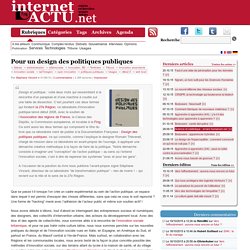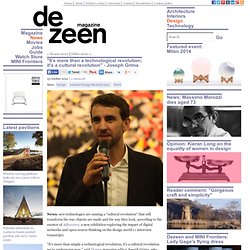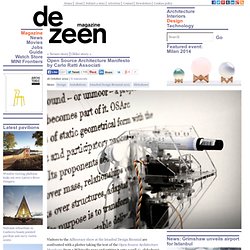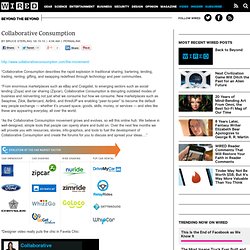

Defensedistributed.com. Pour un design des politiques publiques. Design et politique : voilà deux mots qui ressemblent à la rencontre d’un parapluie et d’une machine à coudre sur une table de dissection.

C’est pourtant ces deux termes qui fondent la 27e Région, ce laboratoire d’innovation publique lancé début 2008, avec le soutien de l’Association des régions de France, la Caisse des Dépôts, la Commission européenne, et incubée à la Fing. Ce sont aussi les deux termes qui composent le titre du livre que ce laboratoire vient de publier à la Documentation Française : Design des politiques publiques, ce qui consiste, comme l’explique le designer Romain Thévenet, chargé de mission dans ce laboratoire en avant-propos de l’ouvrage, à appliquer une démarche créative méthodique à la façon de faire de la politique. “Notre démarche consiste à imaginer une “conception” de l’action publique – au sens où l’entend l’innovation sociale, c’est à dire de repenser les systèmes “avec et pour les gens”.
La crise du management public. 3D printing is "bringing the factory back to the individual" News: cheap 3D printers mean manufacturing can again take place at home as it did before the industrial revolution, according to MakerBot Industries CEO and co-founder Bre Pettis (+ audio).

Above: MakerBot CEO Bre Pettis talks to Dezeen editor-in-chief Marcus Fairs "Before the industrial revolution everybody did work at home; there was a cottage industry," said Pettis (pictured above), who spoke to Dezeen today at 3D Printshow in London, where his company launched a new desktop printer costing $2,200. "Then you had to go to the factory to work. Now we're bringing the factory back to the individual.
" Pettis was in London to unveil MakerBot's Replicator 2 3D printer, which he claims is the first affordable printer that does not require specialist knowledge to operate. Brooklyn-based MakerBot was founded in 2009 with the goal of producing affordable 3D printers for the home and it has become one of the best-known brands in the rapidly expanding 3D printing and open-source design movement. Joseph Grima on Adhocracy at Istanbul Design Biennial. News: new technologies are causing a "cultural revolution" that will transform the way objects are made and the way they look, according to the curator of Adhocracy, a new exhibition exploring the impact of digital networks and open-source thinking on the design world (+ interview transcript).

"It’s more than simply a technological revolution; it's a cultural revolution we’re undergoing now," said Domus magazine editor Joseph Grima, who curated the exhibition as part of the inaugural Istanbul Design Biennial, which opened this weekend: "And I think this is just the beginning. " Rigid top-down systems established to optimise mass production in the last century are being replaced by flexible peer-to-peer networks, leading to new aesthetic codes and the destruction of the idea of the designer as author, Grima told Dezeen. He added: "It ultimately boils down to the emergence of the network as the productive model par excellence of our time. Marcus Fairs: What does Adhocracy mean? Open Source Architecture Manifesto at Istanbul Design Biennial. Visitors to the Adhocracy show at the Istanbul Design Biennial are confronted with a plotter taking the text of the Open Source Architecture Manifesto from a Wikipedia page and writing it onto a wall. (+ slideshow) Created by Walter Nicolino and Carlo Ratti of Carlo Ratti Associati, the plotter updates the text as the Wikipedia page changes.

The project began last year when Joseph Grima, editor of Domus magazine and curator of the Adhocracy show, asked Ratti to write a manifesto for open-source architecture. "I said yeah sure, but let’s do it in an open-source way," Ratti told Dezeen. "So we set up a page on Wikipedia. " Ratti, who is director of the Senseable City Lab at MIT, invited contributors including Nicholas Negroponte, John Habraken, Paola Antonelli and Hans Ulrich Obrist to contribute to the page to create an evolving document that was published in Domus in June 2011. Collaborative Consumption. “Collaborative Consumption describes the rapid explosion in traditional sharing, bartering, lending, trading, renting, gifting, and swapping redefined through technology and peer communities.

“From enormous marketplaces such as eBay and Craigslist, to emerging sectors such as social lending (Zopa) and car sharing (Zipcar), Collaborative Consumption is disrupting outdated modes of business and reinventing not just what we consume but how we consume. New marketplaces such as Swaptree, Zilok, Bartercard, AirBnb, and thredUP are enabling “peer-to-peer” to become the default way people exchange — whether it’s unused space, goods, skills, money, or services — and sites like these are appearing everyday, all over the world. “As the Collaborative Consumption movement grows and evolves, so will this online hub. We believe in well-designed, simple tools that people can openly share and build on. *Designer video really puts the chic in Favela Chic: Von Hippel : le paradigme de l’innovation par l’utilisateur.